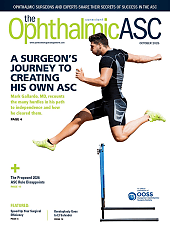While previous studies have examined tear film stability before and after virtual reality (VR) headset use, real-time changes in tear film behavior during VR headset use have remained unexplored, according to a press release issued by Waseda University.
To address this issue, associate professor Yoshiro Okazaki of Waseda University and visiting professor Dr. Norihiko Yokoi from the Kyoto Prefectural University of Medicine, both of Japan, designed a novel method using VR headsets with an ultra-compact camera for real-time observation of tear film dynamics. Their article, published in Scientific Reports, offers the first real-time data on how tear film dynamics change over the duration of a VR session, noted Waseda University.
The researchers designed a VR headset with an integrated ultra-compact camera system that allowed noninvasive observation of the tear film during a VR session. Fourteen healthy participants played a VR game for 30 minutes while the built-in camera monitored changes in their tear film lipid layer interference pattern at baseline and every 5 minutes during brief pauses.
As the gameplay progressed, researchers noted a significant increase in the interference grade of the tear film lipid layer, consistent with its thickening. Additionally, the corneal and upper eyelid temperatures increased significantly after the VR session. These findings, according to the study, suggest that the periocular warming inside the headset may have led to the thickening of the tear film lipid layer. A previous study demonstrated that an increase in lipid-layer thickness, induced by elevated temperature, is associated with enhanced tear film stability. Therefore, it is essential that the present study elucidates whether similar stabilization of the tear film occurs under the experimental conditions employed, Waseda University stated in the press release.
"While not intended as a health claim, our findings provide insights into how the thermal environment inside VR headsets may influence tear film behavior,” said Professor Okazaki in the press release. "This is useful not just for the users but also for the headset designers who are involved in developing future VR systems.”
According to the press release, the study’s observations were limited to healthy participants, leaving open questions about whether similar results would be seen in individuals with dry eye disease or meibomian gland dysfunction. The study also did not include a non-headset control group. Okazaki notes that they plan to expand the research to include clinical populations and appropriate controls.
For now, these findings provide valuable early insights for both VR users and developers. While the study does not address treatment or preventive strategies, the results may inform future headset design and usage considerations related to eye comfort and health, the press release stated.









